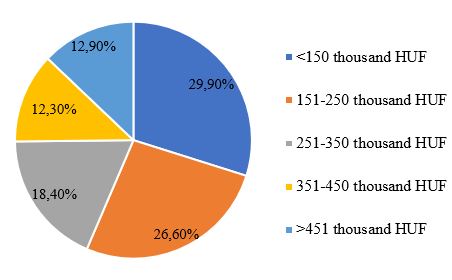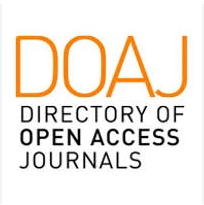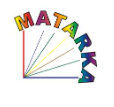Substantive and formal requirements
STUDIES
Language of publication: Hungarian or English.
The length of the articles should be: minimum 40.000, maximum 60.000 characters (with spaces).
Substantive and formal requirements
- The study should be prepared by computer with word processor (and should be saved in doc or docx format).
- Page size: B5 (JIS)
- Font type: Garamond
- Font size: 12
- Line spacing: 1.5
- Spacing (before and after): 0 pt
- Indentation (left and right): 0 cm
- Margins: all around 2.5 cm
- Alignment: justified
Structural requirements of the studies
1. Title of the study in Hungarian and in English. (Non-native Hungarian authors do not need to add the title, their position and the abstract in Hungarian.)
2. Information about the authors in Hungarian and in English: name, position, institution (e.g. Budapest Business School – University of Applied Sciences, Faculty of Commerce, Hospitality and Tourism, Department of Economic and Business Studies), email, ORCID ID (if available). Keywords: minimum 3 maximum 6 keywords should be added in Hungarian and in English. JEL code/codes: Codes of JEL (Journal of Economic Literature) classification can be found at the following site: https://www.aeaweb.org/econlit/jelCodes.php?view=jel
3. Abstract in Hungarian and in English. Abstract should be a substantive summary of the study the length of which should be 1.500–2.000 characters (including spaces) in which the author(s) should specify the main goals, research questions and/or main hypotheses, methods and results of the study. The English abstract should be the mirror translation of the Hungarian version.
4. Introduction. The relevance of the topic, specification of choosing the topic, the main goals, research questions and/or hypotheses.
5. Bibliographic review. The references should be indicated in the list of bibliographic references (See at List of References)! The in-text references should include only the family name of the cited author and the year of publication (Black, 2019). In case of a verbatim quotation the indication of the respective page is a must (Black, 2019:26).
The list of references should not contain bibliographic records which are on referred in the text.
The authors are kindly advised to use research discussions and results being published in earlier issues of MKSV.
6. Research methodology.
7. The exact results of the primary and/or secondary research should be specified).
8. Conclusion, suggestions.
9. List of references (Bibliography). The list of used bibliography should be prepared in accordance with the rules of Harvard referencing system.
Books, edited books, book chapters:
- Drucker P. F., 1970. The practice of management. London: PAN BOOKS LTD.
- Kozár, L., 2011. Nemzetközi áru- és tőzsdei kereskedelmi ügyletek. Budapest: Szaktudás Kiadó Ház Zrt.
- Borenstein, M., Hedges, L.V., Higgins, J.P. & Rothstein, H.R., 2009. Introduction to meta-analysis. West Sussex: Wiley & Sons Ltd.
- William, S.T. (eds.), 2015. Referencing: a guide to citation rules. New York: My Publisher
- Ravesloot, J.C., Darling, G.A. & Waters, M.R., 2009. ‘Hohokam and Pima-Maricopa irrigation agriculturalists’, in CT Fisher, J Brett Hill & GM Feinman (eds), The archaeology of environmental change: socionatural legacies of degradation and resilience, University of Arizona Press, Tucson, pp. 232-45.
Journal articles:
- Jeffreys, S., 2007. Double jeopardy: women, the US military and the war in Iraq, Women's Studies International Forum, 30(1), 16-25.
- Ruichen J., 2020. Knowledge, attitudes and mental health of university students during the COVID-19 pandemic in China. Children and Youth Services Review, Volume 119, 1-4. https://doi.org/10.1016/j.childyouth.2020.105494.
- Morningstar, M.E., Lombardi, A. & Test, D., 2018. Including college and career readiness with in a multitiered systems of support framework. AERA Open, 4(1) https://journals.sagepub.com/doi/10.1177/2332858418761880
- Némethy, K. & Poór, J., 2019. A jövő munkahelye az ipar 5.0 küszöbén. Munkaügyi Szemle, 62(1), 9-17. http://munkaugyiszemle.hu/jovo-munkahelye-az-ipar-50-kuszoben (2019.04.28.)
- Prud’homme, B., 2016. Implementation of sustainable development practices in the hospitality industry: A case study of five Canadian hotels. International Journal of Contemporary Hospitality Management, 28(3), 609-639. https://doi.org/10.1108/IJCHM-12-2014-0629
Doctoral theses:
- Jones, S.J., 2006. Blogging and ESL writing: A case study of how students responded to the use of weblogs as a pedagogical tool for the writing process approach in a community college ESL class. (doctoral dissertation). Austin: The University of Texas https://repositories.lib.utexas.edu/handle/2152/2736
Websites:
- hu, 2013. Orosháza jelene. http://www.oroshaza.hu/2013/05/01/oroshaza-jelene/
Regulation, directive:
- Regulation (EU) 2016/679 of the European Parliament and of the Council of 27 April 2016 on the protection of natural persons with regard to the processing of personal data and on the free movement of such data, and repealing Directive 95/46/EC (General Data Protection Regulation).
As every article of the journal will get DOI (Digital Object Identifier) number, authors are kindly requested to check all of their used bibliographies whether they have DOI number registered at CrossRef. The DOI codes can be checked at the following link: https://search.crossref.org/ Authors should insert the full line (as hyperlink) from the list of search to the end of the references. For example: Bencsik Andrea (2016): Munkaerőpiaci elvárások versus tudásmenedzsment. In: Fenyvesi É. – Vágány Judit (szerk.): KORKÉP – XXI. századi kihívások, Budapest, Budapesti Gazdasági Egyetem, pp. 166-189. https://doi.org/10.29180/korkep.2016.8
DOI codes registered ast CrossRef improves the visibility of the articles and facilitates to follow citations. It may happen that no DOI identifier can be found to a cited bibliographic source – in this case there are no further duties with that source.
Figures and tables
Tables should be numbered consequtively (the numbering should not be restarted in new chapters, subchapters). Each table needs to have its title and measuring units of the data, values included has to be added. Tables should be prepared by the Table editor of the Word-programme (tables inserted as image files will not be accepted). The numbering and the title should be positioned above the tables while the indication of sources should be under them.
Example:
Table 1. Guest nights spent by foreign tourists in commercial accommodation sites in Budapest band Pest county in 2017
Source: HCSO, 2018
The figures also need to have titles, their numbering is also continuous (numbering will not be restarted in new chapters, subchapters). The numbering and the title should be positioned above the figures while the indication of sources should be under them.
Example:
Figure 1. The division of respondents in terms of monthly gross incomes (%)
Own edition
In order to ensure the uniformed appearance of the journal it is very important that all the tables and figures should be sent to us in processable format. Therefore the authors are requested to attach the original Excel files to the manuscript (in case of figures prepared by other way but Excel should be sent in a kind of vector format, like tif). To reach optimum appearance the resolution of images are needed to be 300 dpi, their colour depth should be 8 bits at 1:1 (the image size in cm should be equivalent with the expected print size). This requirement is also applied on black and white images.
Authors are kindly requested to submit their drafts to the editorial committee by uploading them to the following website: https://ojs3.mtak.hu/index.php/mksv/about/submissions
The authors are advised to check whether the materials to be submitted complies with all the requirements of the checklist.
Substantive and formal requirements in pdf























